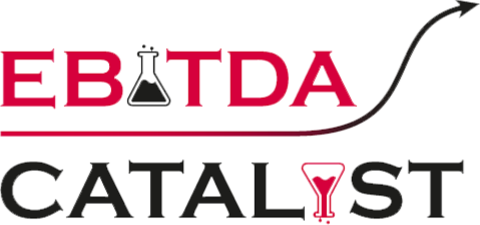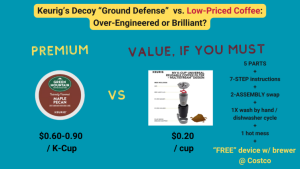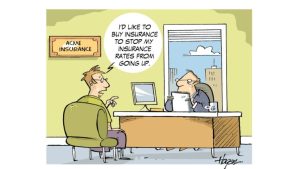Summary
- Netflix will have significantly more attractive economics on the ad-supported plan than on its basic and premium plans.
- The plan pricing is cleverly framed as both “significant savings” vs. existing plans and as cheaper than competitors.
- In effect, Netflix is paying subscribers significantly less than $1/hour to watch ads.
- At a Hulu-comparable $30/CPM, it would make at least $3.60/hour in advertising revenue, making adoption of ad-supported plans a juicy profit machine.
- Behavioral economics biases (availability bias, framing, etc.) line up to promote adoption.
Why I see opportunity here
Netflix (NASDAQ:NFLX) is taking steps to monetize underutilized pricing power. The ad-supported plan has the makings of one of the few moves that could revive Netflix’s prospects. Its Oct. 13, 2022, announcement detailing the plan revealed a few different traits of a masterful, potentially game-changing pricing strategy. Because the economics will be material to the business, and pricing strategy is central to the company’s success or failure with this move, this meets my criteria for the rare situations where I will offer a view. Furthermore, this is a masterful example of using “pricing power” that does not lie in blunt price increases. Rather, the pricing power here is bringing Netflix’s underutilized assets into the “offering design” and monetizing accordingly.
While the stock ran up ~35%+ from its lows – much of it in anticipation of this move – at 21.5x P/E and 3.2x EV/sales, the stock is no longer terrifyingly valued if some resumption of growth materializes. It is cheaper than PayPal (PYPL) yet higher margin/higher return on nearly every metric. And PayPal is not exactly free of growth questions either. Though these names are in different industries, these two present some remarkable similarities.
The basic math adds up to striking profit potential
We will look in turn at what Netflix “gives up” in this “cheaper” plan, and what it gets in return. In summary, we find Netflix would be giving up $3-$13/month in potential subscription revenue to get 15 hours of ad watching per household. The 15 hours of ad watching should be worth at least $50/month in ad revenue, making for a mouth-watering ROI.
According to compiled statistics, the average Netflix subscriber watches its content for 3.2 hours/day. (We’ll round down to 3 hours for simpler math.) The ad-supported plan, per the announcement, will come with ~5 minutes/hour in ads. Over the 3 hours above, that’s ~15 minutes of ads/day (per person). Assuming two users per subscribing household, that’s 30 minutes or 0.5 hours/day. Over a 30-day month, this adds up to 15 hours/month of ads per subscription.
Even compared to Netflix’s most expensive $19.99/month plan, the new $6.99 ad-supported price point “saves” at most $13/month, while also renouncing other benefits from premium plans. Let’s assume ads are a generous 30 seconds/ad, meaning an hour of ad watching would mean viewing 120 ads. Let’s further assume a $30 CPM (Hulu’s CPM is reported around $30, ranging between $20 and $60 depending on the ad). CPM stands for cost per thousand impressions, meaning each ad viewed would make about $0.03 in revenue for Netflix. Those 120 ads per hour of ad watching then would make about $3.60 per hour watched. And we just figured about 15 such hours per subscription on the ad-supported plan, yielding about $54/month in ad revenue.
Here’s one thing to note: Hulu is two-thirds owned by arch-rival Disney (DIS) and seems a particularly apt comparable. I am not, however, an expert in ad rates, and the assumption that CPM rates for Hulu/Netflix would be an “apples to apples” comparison could be subject to challenge.
Netflix itself coyly admitted it’s not planning to lose money on the “downgrading” of subscribers. As per The Wall Street Journal:
[Netflix COO Greg] Peters declined to say what portion of Netflix’s existing subscribers the company expects to switch to the ad-backed tier, but he said he expected revenue from ad-tier subscribers to be the same or greater than it is from the comparable ad-free plan.
If the math above is even half right, then Peters is greatly understating the case. This is not surprising. For one, executives don’t get paid to overpromise, so sandbagging is common. More importantly, as discussed in the section on behavioral economics biases below, Netflix’s likelihood to achieve wide adoption for this cash cow plan benefits from keeping the attention on what users gain (a lower price), and making Netflix’s own gains (by “charging” users in time/ad impressions) as forgettable as possible.
Two types of “adopters” of the ad-supported plan would be immensely accretive. One, users downgrading from the “basic” $9.99 plan would “cost” Netflix only $3/month in foregone subscription revenue, vs. the $50+ in ad revenues. That is a heck of a trade. And, two, new subscribers “upgrading” from sharing passwords or feeling the service was too expensive and taking the leap would bring both $6.99 in new subscription revenue and the juicy ad revenues.
How many takers will Netflix find?
Again, even if we haircut our math above by 50%, the number of adopters of the ad-supported plan becomes one of the, if not the, most important KPIs for Netflix’s profitability nearly overnight. Unless, that is, the uptake is just not material enough to matter. So we turn to why we think Netflix will find enough takers for this plan to drive serious profit improvement.
Behavioral economics: tailwinds for adoption
It turns out a surprising amount of consumer choices boil down to behavioral economics: the subconscious biases that draw all of us, by and large unaware, to make decisions in predictable (and often irrational) ways. Netflix’s move here harnesses some of the strongest insights from behavioral economics to present a choice that will look attractive to significant segments of consumers.
First, Netflix is masterfully deploying a framing effect. Framing takes advantage of consumers’ propensity to make decisions based on comparisons framed as gains or losses. Here, the most obvious comparison every consumer will make is against Netflix’s previous plan choices, and in particular for current subscribers, vs. the plan they’re already on. The headline price differential will be perceived as a substantial gain in favor of the new plan. This will be particularly true for highly price-sensitive consumers, the ones most likely to be considering potentially going without a Netflix plan altogether (churning). Would it not be a stroke of genius to turn would-have-been churn into not just retention, but retention into a plan that is dramatically more profitable?
Second, another well-documented bias from behavioral economics 101 will also kick in: the availability bias. This will ensure that all the “losses” (having to watch ads, not having access to the full content library, etc.) are easily dominated by the much easier to remember and cognitively evaluate “gain” from the price differential. Let’s face it, few Netflix users will do the math on ad watching we did here. It’s cognitively “slow” (as described in Daniel Kahneman’s Nobel-worthy book Thinking, Fast and Slow). It’s also taxing, as it is to remember the ways in which the new plan is “feature deprived” – or to check if your favorite shows are in the content excluded from it. Though many users will in fact do the latter, this is highly correlated with perceiving high value from specific shows, which should drive the willingness to pay and a renewed appreciation for the existing plans.
Third, another psychology bias that may have a tailwind effect for Netflix is reciprocity, based on a sense from price-sensitive consumers who are not yet subscribers that Netflix is finally “meeting them halfway” with its “more affordable” plan. In one of the most influential books in sales and marketing, Influence: The Psychology of Persuasion, Robert Cialdini laid bare the extraordinary power of reciprocity to drive behavior and influence. Users from the most price sensitive segments of the market might well perceive this plan as a “gesture” from a beloved brand aimed at them. These segments could also, all other things being equal, feel less taxed by time spent watching ads.
Likewise, those sharing passwords who have already been primed to feel a bit guilty about it by a lot of press on the phenomenon, and to be concerned by Netflix’s avowed aim to crack down, might also feel it’s time to reciprocate for all the years of freeloading, and for Netflix to finally come their way too. These might be optimistic takes on human nature, but every bit of hope in the new subscriber growth battle helps Netflix.
Why caution is still warranted
The fact remains that pricing, no matter how masterful, cannot replace value creation through superior products and services. Netflix must continue to deliver great content at a rate equal or greater to its formidable competitors.
Furthermore, if the economy continues to move toward a recession, or inflation continues to eat away at the budgets of the very price-sensitive consumers who are the dead-eye target of this pricing strategy twist, Netflix and others might feel the collective consumer belt tightening. The new plan will help, but it cannot offset for long if Netflix’ existing subscribers continue to contract.
Last, but not least, the cost of acquiring or producing top-flight content might well adjust and scale with Netflix’s success (witness the ever-ballooning prices for sports TV rights elsewhere). Some portion of any gains Netflix makes here will have to be shared back down into its cost structure.
Conclusion
I would consider dipping into Netflix shares and writing covered calls here, especially if the stock dips back down toward $200. Moves in pricing strategy like this one usually take a bit of time to work their way through a company’s operations, and there is a chance of some retrenchment now that the news is finally out and the recent run-up needs to consolidate.
In upcoming news or earnings, any commentary on faster- or slower-than-expected adoption, or on the real economics of this plan, could become major catalysts in either direction. But there’s too much to like in this move for me not to think the odds tip in Netflix’s favor to make this plan a success.
Finally, it’s a good habit when writing about biases influencing behavior for other people to remain self-aware that no one is immune, including me. So any reader should consider that helping companies win with pricing is what I do, so when I see what I think is a winning pricing move, I might be biased to like it more than the average investor.
Note: An edited version of this post was published by Seeking Alpha, the world’s largest investor site.
Image: Courtesy Netflix.com
Want more EBITDA Catalyst insights?
Follow EBITDA Catalyst on LinkedIn: https://www.linkedin.com/company/ebitdacatalyst/ or connect with any of us directly.
Check out our Pricing Quotes page, where you can submit your own favorite. If you are a pricing professional or someone who just thinks about pricing a lot, feel free to submit your own words of wisdom and we will quote YOU (if we find it quotable)! https://www.ebitdacatalyst.com/quotes-on-pricing/





